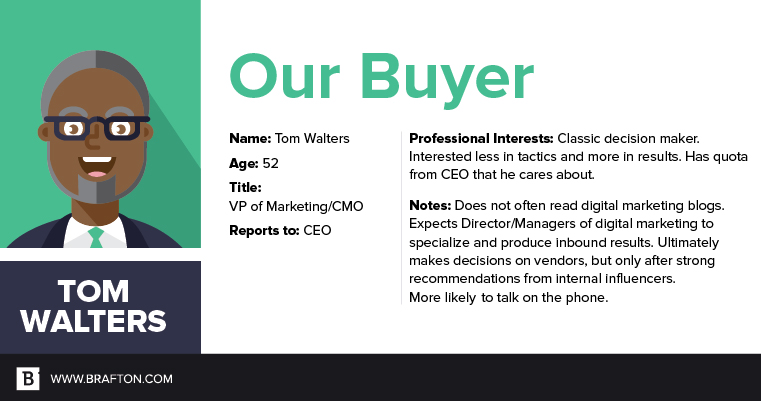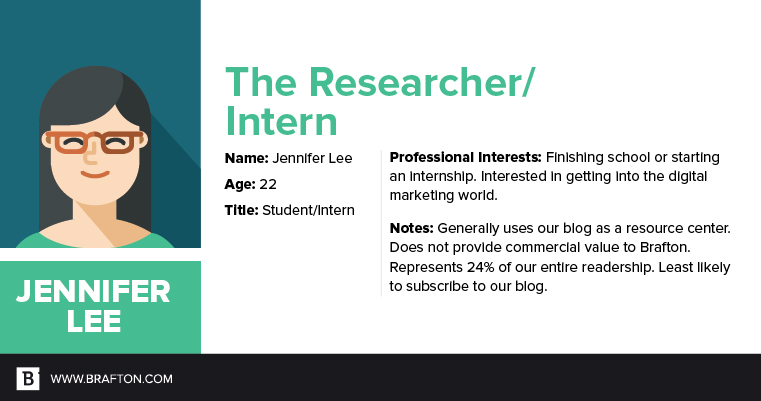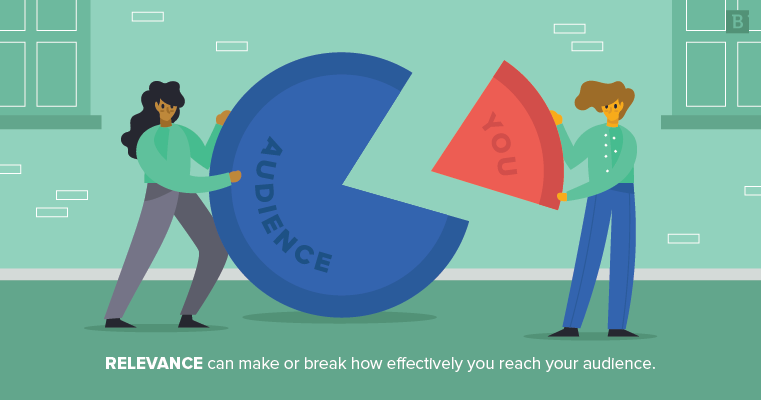There exists a dark and dreary place where little to none of your potential customers are hanging out. It’s called yesterday’s news, and it’s where brands end up when they get lost in the crowd, struggling to find their standout position.
On a brighter note, we’re in the business of preventing your brand from ever being there. By creating and effectively promoting relevant content, you can earn your spot at the top of consumers’ minds. And with an eye on continuous improvement, you can stay there.
The key to success is a relevant content marketing strategy that not only gets Google’s attention but also genuinely speaks your audience’s language. Here’s what you need to know about relevant content marketing in 2019:
What is relevant content marketing?
What happens to the meaning of content marketing when you put the world relevant in front of it? Well, the more relevant your content is, the better it will perform. Thus, relevance can ultimately make or break how effectively you reach your audience.
Relevance can ultimately make or break how effectively you reach your audience.
Content marketing is designed to generate organic traffic by stimulating interest through compelling blogs, white papers, videos, social media posts and other digital content. It earns the right to assume the all-important descriptor of “relevant” when the content accurately and sincerely answers users’ questions and appeals to needs and emotions.

Remember that, while search engines are the bridges that connect you to consumers, you can’t forget those people in the process. Creating relevant content means you’ve got both Google and your audience in mind. At any rate, your users’ problems are often linked to the keywords you sprinkle into your content. Solving their problems and appealing to their interests nearly always goes hand in hand with earning that dominant search ranking.
What’s so important about creating relevant content?
The name of the marketing game has always been to focus on that winning distinguishing factor. Anyone can create content – and pretty much every brand does. Success comes from capitalizing on the elements of your narrative that show consumers you’re worth a listen. Surprise: Brands that are worth listening to are relevant brands.
In a nutshell, relevant content helps you reach the right people in an overwhelming sea of information. When you’re attracting the right attention, you’ll drive more qualified leads to your site, boosting your conversion rates and, in turn, reducing those frustrating bounce rates. In fact, content marketing fosters conversion rates that are six times higher than other marketing methods. Imagine how much more impressive those numbers can be when your content marketing efforts are relevant.
When viewers are genuinely interested in your content, you’ll also notice that they spend more time on your website and are more likely to share your content with their own networks.
Of course, capturing this high-quality attention also helps you achieve better search rankings. We’ve said it before and we’ll say it again: 72 percent of marketers consider relevant content their top SEO tactic. They’re right in doing so, as relevance contributes to brand awareness, audience engagement, website traffic, lead generation and nurturing, customer retention and need we say more?
Anyone can create content – and pretty much every brand does. Success comes from capitalizing on the elements of your narrative that show consumers you’re worth a listen.
More than the cool factor, relevance has a tight relationship with authority. As your brand continually pumps out relevant content, it becomes a trustworthy voice and resource for your target audience. Even Google is looking out for this, scanning content for relevant topics, language, structure and credible external links and citations to evaluate its authority and trustworthiness.
Along with proving that you have something worthwhile and reliable to say, taking care to tailor your content to the needs, interests and preferences of your audience will ultimately increase the odds that they’re willing to do business with you. I mean, isn’t that what we’re all here for at the end of the day? Yep, cue the celebrations.
Sounds amazing – but how do we create relevant content?
Okay, maybe I got a little ahead of myself. We have to create the relevant content that calls for celebration before we lose focus.
To create a strategy designed to provide the most relevant content possible for your audience, make sure these essentials are in your toolbox:
Persona development
So who are the lucky people who get to interact with your content? Answering this question well is a must-have for relevant content marketing. The better you know your target audience, the more likely you are to create content that speaks their language.
The better you know your target audience, the more likely you are to create content that speaks their language.
Enter buyer personas. They’re crucial for identifying and understanding your target audience. These telling descriptions paint clear pictures of the people who are buying your product or service and why they’re interested in the purchase.
As you sit down to craft your buyer personas, think of it like speed dating. Your descriptions should answer applicable questions about your target audience, such as:
- How old are they?
- Are they married?
- Where do they live?
- What level of education do they have?
- What kind of career paths do they typically take?
- Are they a decision-maker within their company?
- What kind of challenges do they face?
- What kind of content do they typically engage with?
- Are they active on social media?
- Are they tech savvy?
B2B companies often target personas that deal more with job titles and professional goals, while B2C buyer personas are more likely to home in on demographics and personal interests. Either way, the final result should guide content that targets specific needs, behaviors and pain points. If it helps, you can even find a stock image of a person that totally fits the bill.
Remember that you don’t have to limit yourself to just one buyer persona. Don’t go overboard, but having three to five personas can help you strategically market different elements of your product or service to the right people.
For instance, meet Tom Walters. He’s 52 and holds the prestigious title of VP of Marketing. He reports to the CEO, which means he cares about the quotas he’s given and is interested less in tactics, more in results. He’s also one of our buyer personas.

On the other end of the spectrum, another Brafton persona is Jennifer Lee. She’s a college student who just landed a marketing internship, and she’s totally interested in everything and anything digital marketing.

As you might assume, Tom and Jennifer engage with very different articles and pages on the Brafton site. While Tom is a decision-maker who may choose to employ our services, Jennifer is looking to us as a trustworthy resource for industry information and advice.
Another pro tip to keep in mind: The buyer personas you craft are never set in stone. It’s a good idea to continually revisit your buyer personas to make sure they remain relevant to the company’s goals. Telling insights from market research can also help you enhance or add to your personas, putting you on a direct path to growing your audience. We love Tom and Jennifer just the same, but we also understand that they might not align with our newest services or business objectives five years from now.

Keyword research
Once you know who you’re marketing to, you have to make sure your brand pops up on their radars. AKA you never want to miss a chance to end up on page one of their search results.
A well-researched keyword strategy will help bump up your content in organic search rankings. You can start building your list with keyword discovery, paying close attention to your users’ intent as you brainstorm. Put yourself in your customers’ shoes, thinking about what kind of phrases and questions they’re searching online.
Don’t forget to add long-tail keywords to your list, as they’re more specific to your target audience’s searching habits and therefore have higher conversion rates. Tools like Google Analytics, SEMrush and Moz Keyword Explorer can further provide keyword suggestions based on current trends and search volumes.
After identifying your keywords, you can start using them in your content to build SEO-friendly pages. This goes for all blogs, social posts and landing pages that bear your brand’s name. You’ll also want to use them – or at least describe them – in relevant meta descriptions that score bonus points with your audience. While Google focuses on the headline and body copy, users skim these brief yet oh-so-valuable descriptions that entice them to click on your link.
Keep in mind that you’re still trying to speak your audience’s language, so don’t overdo it on the keywords. Work them in naturally, and don’t keyword-stuff: Google will downrank your pages without hesitation.
Worthwhile narratives
If you want to be relevant, you have to create quality content that’s worth your audience’s time. This starts with the strategic brainstorming that yields worthwhile content topics and execution ideas. Ideation can be a difficult solo challenge, so don’t hesitate to schedule brainstorming sessions with your team to get the creative juices flowing.
There’s plenty of inspiration in your keyword list, as you’ll want to build on topics that lend themselves to naturally using the winning terms. You can also see what your competitors are up to, as you’ll want to make sure you’re discussing similar topics. Even better, you can identify gaps in their content and pick up the slack by covering topics they’re failing to address. Think about what you want your content to achieve and how you want your audience to feel after viewing your content. This will help you tell compelling narratives using a consistent and engaging voice.
Think about what you want your content to achieve and how you want your audience to feel after viewing your content.
Your timeliness will also affect your relevance, so make sure you’re discussing industry news and trends while they’re on the top of everyone’s minds. While evergreen content can live on your site forever, you’ll still want to get in a consistent publishing groove so your audience knows they can always expect fresh content from your brand.
Poignant formats
After ideation comes the next make-or-break-it decision: What type of content will those topics become? There are blog posts, white papers, eBooks, case studies, videos, podcasts, webinars, social media posts and infographics – all with different ways to tell your stories. You can play on their individual strengths to enhance your message and boost performance.
The form your content takes can also define where its place is in the sales funnel. Product videos and informational blogs engage initial interest and build brand awareness, while white papers and case studies are appropriate for potential consumers who have already shown an interest in the topic, product or service.
Keep the power of visual content in mind as you shape your strategy. For instance, research from Omnicore found that video content is 50 times more likely to drive organic search results than plain text. Now, that doesn’t necessarily mean you should ditch the copy altogether. (I’m a writer, people, please don’t scare me like that!) In all seriousness, though, Google still crawls the written word to rank pages. What you can do is embed video and other visual content into your blogs and landing pages to boost their performance.
While messaging, tone and design style should remain consistent, feel free to mix up the type of content you create to keep your audience on their toes and eager for more.

Appropriate channels
With your thoughtfully crafted content ready for publishing, it’s time to post your content where your potential consumers will see it. You want to be where your target audience is for any chance of reaching them, so let their online behavior nudge you in the right direction.
Of course, it would be nice if your business Twitter profile was a one-way ticket to being trendy and relevant, but the reality is that you have to use the platform as it’s intended to truly resonate with other Twitter users. You may share witty commentary on Twitter, and then promote case studies and success stories on LinkedIn and video testimonials on Facebook. Instagram is for your snazziest pictures – but if your product or service doesn’t lend itself to quality snaps, no worries. You don’t have to be on every platform to be relevant. Put your efforts into promoting content on the social media platforms that your target audience uses frequently. As long as you’re sharing quality content in the right place, you’ll get the audience engagement you want.
Put your efforts into promoting content on the social media platforms that your target audience uses frequently.
It’s also important to employ a healthy mix of channels. An effective content marketing strategy, for instance, typically involves posting articles, white papers, infographics and other content on the company’s blog, and then using social media and email marketing to promote said content. It’s this strategic use of the various channels that can yield the most results.
Audience involvement
Sometimes the best way to find out what your audience is thinking and feeling is to just ask them. Shocker, I know.
Surveys and questionnaires are great tools for identifying what kind of content you should create to reach the people you have in mind. Their responses shed light on consumer opinions, needs, challenges and pain points, helping you get to know your audience on a deeper level. You can then use this understanding as a jumping-off point for developing and refining a relevant content marketing strategy.
Think back to the buyer personas we discussed earlier. Are there questions you have for Tom that might not resonate with Jennifer – and vice versa? When you’re looking for more specific responses, you can segment your audience and only send out the survey to the appropriate people. If you run out of questions, you can find templates online and reach out to influencers for ideas.
Savvy marketers also rely on their customers and their followers to advocate for their brand and further boost their marketing efforts. Promoting user-generated content on social media is one of the best ways to do this, with a 4.5 percent higher conversion rate than other forms of social content. People trust their fellow consumers more than brands, which is why they’re more likely to interact with content that comes from users.
Utilizing user-generated content works in a few different ways. You can search for posts that already reference your brand and ask the user for permission to repost – attributing credit to them, of course. You can also ask users to submit content through social media contests and campaign hashtags, work with brand ambassadors or reach out to influencers for a far-reaching shoutout.
Performance reviews
You need to have a solid idea of how well your previous content performed to determine what kind of content is best-received by your audience. Conduct ongoing content analysis and performance audits to create more of what’s working – and hit the brakes on what’s not. Web analytics tools like Google Analytics, Hubspot, SproutSocial, Searchmetrics, Moz and SEMrush can help you gather this telling data about your content.
If the data indicates that you’re lacking on the latest trending keywords and search phrases, you don’t have to replace it with something entirely new. Simply re-optimize your existing content to refresh it with the new keywords. Make a note that you updated the content so users (and Google) knows that the content is relevant. The results are worth it: We’ve seen these content refreshes drive 219 percent more traffic.
Ready to get relevant?
With these relevant content marketing essentials up your sleeve, you’ll have a strategy in place to create content that truly resonates with your audience. When the engagement and conversion numbers start piling up, it will finally be time for that much-deserved celebration.






